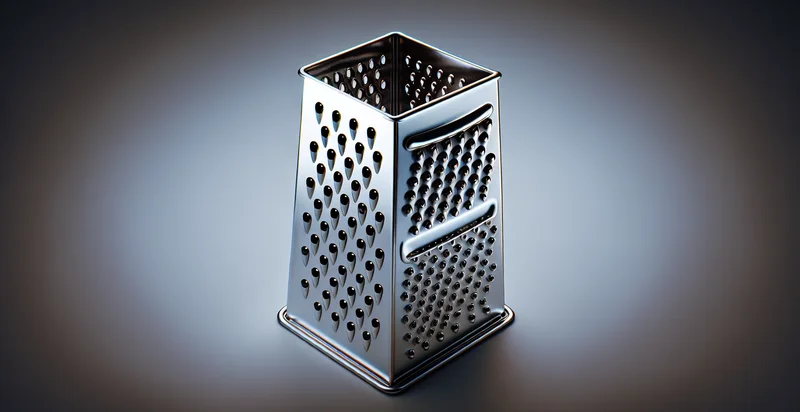Identify what material a grater is made from
using AI
Below is a free classifier to identify what material a grater is made from. Just upload your image, and our AI will predict what material a grater is made from - in just seconds.

Contact us for API access
Or, use Nyckel to build highly-accurate custom classifiers in just minutes. No PhD required.
Get started
import nyckel
credentials = nyckel.Credentials("YOUR_CLIENT_ID", "YOUR_CLIENT_SECRET")
nyckel.invoke("what-material-a-grater-is-made-from", "your_image_url", credentials)
fetch('https://www.nyckel.com/v1/functions/what-material-a-grater-is-made-from/invoke', {
method: 'POST',
headers: {
'Authorization': 'Bearer ' + 'YOUR_BEARER_TOKEN',
'Content-Type': 'application/json',
},
body: JSON.stringify(
{"data": "your_image_url"}
)
})
.then(response => response.json())
.then(data => console.log(data));
curl -X POST \
-H "Content-Type: application/json" \
-H "Authorization: Bearer YOUR_BEARER_TOKEN" \
-d '{"data": "your_image_url"}' \
https://www.nyckel.com/v1/functions/what-material-a-grater-is-made-from/invoke
How this classifier works
To start, upload your image. Our AI tool will then predict what material a grater is made from.
This pretrained image model uses a Nyckel-created dataset and has 13 labels, including Acrylic, Aluminum, Bamboo, Ceramic, Copper, Glass, Iron, Metal, Multi Material and Plastic.
We'll also show a confidence score (the higher the number, the more confident the AI model is around what material a grater is made from).
Whether you're just curious or building what material a grater is made from detection into your application, we hope our classifier proves helpful.
Related Classifiers
Need to identify what material a grater is made from at scale?
Get API or Zapier access to this classifier for free. It's perfect for:
- Material Verification for Suppliers: Manufacturers can use the image classification function to verify the materials used by suppliers for graters. This ensures compliance with quality standards and helps maintain product integrity throughout the supply chain.
- Product Quality Control: Quality assurance teams can implement this function to identify and classify the materials of graters in production. This process can prevent defective products from reaching consumers and helps uphold brand reputation.
- Eco-Friendly Material Promotion: Retailers can utilize this classification tool to distinguish between eco-friendly and conventional grater materials. This promotes sustainable products to environmentally conscious consumers, boosting sales and brand equity.
- Consumer Education: E-commerce platforms can integrate the function to provide detailed information about grater materials to potential buyers. This educates consumers on the benefits and drawbacks of different materials, aiding them in making informed purchasing decisions.
- Market Research Analysis: Market analysts can harness this function to analyze trends in grater materials across various brands. This data can guide companies in product development strategies and assist in identifying emerging market trends.
- Warranty Assessment: Customer service teams can utilize this classification function to verify the material of a grater when processing warranty claims. Ensuring the right materials are used helps in determining the eligibility of claims, reducing fraud, and maintaining warranty integrity.
- Customization and Design: Designers can apply the function to explore various material combinations for innovative grater designs. By analyzing material properties, designers can create products that meet specific performance criteria and consumer preferences.


